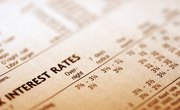A capital lease is an instrument that businesses can use to lease an asset but get all of the benefits of ownership. They also take on all of the liabilities as if they are the true owner of the property. If you are thinking about a capital lease, you might want to know: How do you calculate a capital lease?
Capital Lease vs. Operating Lease
In answer to the question, "How are lease payments calculated?" it is important to understand the difference between a capital lease and an operating lease.
An operating lease is the most typical form of lease where the lessee does not take on the liabilities associated with owning the property. For instance, if a pipe leaks, the building owner would be responsible for paying for the repairs and any losses. This also means that the lessee cannot deduct the costs of the repair and losses from their taxes. With a capital lease, the lease pays monthly payments to the building owner, but they take on the responsibilities of ownership and would have to pay for the repairs and damages.
Now that you understand the difference between a capital lease and an operating lease, we can explore how the lease amount is calculated.
Read More: Lease Capitalization Criteria
Capital Lease Calculator
Do capital leases have interest? Lease obligations in a capital lease can include rent of the asset, hire charges and other items depending on the building and its use. A standard rental agreement does not typically include interest, but a capital lease does, just like any other loan for an asset.
Let’s say ABC, Inc. wants to rent a building from DEF, Inc. for the next five years. The lease says that ABC must pay DEF $10,000 at the end of the year as part of the lease agreement. If the lease term is more than one year, it must be treated as a capital lease by ABC. To build the capital lease calculator, ABC will need to find the present value of the lease. ABC uses a discount rate of 10 percent. This means the calculation will be as such:
| Year | Cash Flow | Discount Factor | Present Value |
| Year 1 | $10,000 | 0.909 | $9,090 |
| Year 2 | $10,000 | 0.826 | $8,260 |
| Year 3 | $10,000 | 0.751 | $7,510 |
| Year 4 | $10,000 | 0.683 | $6,830 |
| Year 5 | $10,000 | 0.621 | $6,210 |
| $37,900 |
This means that ABC will record a capital lease obligation of $37,900 instead of $50,000.
Capital Lease Implicit Interest Rate
A capital lease often has an implicit interest rate. This means that the interest rate is implied, but not stated in the capital lease agreement. How do you calculate the implicit interest rate on a lease?
You can calculate the implicit interest rate with a simple formula. You need to know the amount borrowed (principal), the term of the lease and the monthly payments. Let’s say ABC now wants to rent equipment for five years with a principal of $15,000. The annual fee is $3,500 per year. This means the total payment after five years is $17,500.
Total Payments = (total payments X ) Total Payments = ($3,500 X 5)
The difference between purchase and financing is $17,500-$15,000. This means that ABC would pay $2,500 as the implicit rate for the five-year term.
This capital lease calculator is basic, and there might be items written into the contract that could affect this calculation. In terms of interest, the capital lease is similar to any other interest loan on an asset. The difference is in who is responsible for the upkeep and who can take the deductions for expenses on their taxes.
Read More: How to Calculate Capital Lease Interest Rates
References
Tips
- The easiest way to make these calculations is with an online lease calculator. Some websites that have lease calculators are listed in the References section.
Writer Bio
Adam Luehrs is a writer during the day and a voracious reader at night. He focuses mostly on finance writing and has a passion for real estate, credit card deals, and investing.

